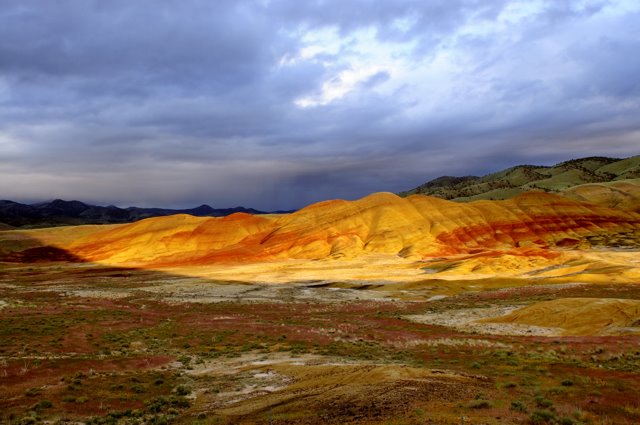Most serious photographers, whether amateur or above take pride in being able to shoot their cameras in totally manual settings. The really good ones know and understand exposure, what the effect of long lenses verses normal verses wide-angle lenses can be and the relationship of focal length to distance and so on. They understand the differences between shooting landscapes, portraits, panoramas, panning and action shots, and which lenses and exposures produce the best results in each instance. These photographers sometimes shudder at the thought using anything that is considered "auto" on their cameras under any condition or circumstance. It's a matter of pride and integrity. They might actually have a feeling of "guilt" if they stooped so low as to "autofocus," especially if one of their peer's found out that they had reduced themselves to letting the camera make any decisions for them at all. "Oh the Shame!"
I look at it differently and thankfully so do millions of other photographers and manufacturers. The reason is this, when we choose the various settings our cameras are capable of, whether auto or manual, we know why we want that setting and what effect it is supposed to produce. We know and understand exposure, but we also understand that sometimes conditions are such that it is humanly impossible for the photographer to track and adjust to all the changing conditions we experience while shooting.
Here is an example:
This weekend I was shooting pictures of my grand son as he and his teammates played a baseball tournament.
I proudly set all the settings on my camera as follows:
1. For White Balance-I used auto because the sun and clouds were rapidly intermittent and I knew I would be watching the game and not the specific lighting.
2. ISO-also auto because late in the day we've been having very dark clouds actually make it so dark that shutter speeds become too slow to stop the action. Letting the camera choose the best ISO setting would help keep shutter speeds up.
3. Quality was set to normal. I don't expect to need RAW data here for large format images that I can't produce with the cameras normal setting. I can also get a lot more images on my cards which is important in this instance since I was shooting multiple shots to capture the action.
4. My auto focus was set to continuous servo, and the dial at "Ch" for continuous shooting at 6 frames/sec. I wanted to capture the action with as many images as possible of the batter or the close plays at the bases or in the field.
Compose
5. I took advantage the Nikon D300's 51 auto-focus points with 3D tracking so my images would be as clear as possible during the sometimes very fast action sequences. This way I could swing the camera from batter to outfielder to base runner while adjusting the focal length on my zoom lens to get as much of the action as possible. (This is really hard to do)
6. Next I set my camera to "P" or "Programmed Auto" mode. This allows the camera to set the shutter and aperture based on its meter readings regardless of what focal length I am adjusting to, but will also allow me the latitude of over-riding the auto-setting if I choose to.
I had a few other settings adjusted here and there too such as whether my camera should choose shutter or focus priority or both, and so on. So in the end, was I really doing all the work and totally in charge of my images or was the camera doing all the work and giving me the credit for whatever came out? I like to think I was the one in charge. Yes I delegated certain aspects to my camera and took advantage of the tools and abilities it provides, but I chose which ones and I knew and understood what they were and why I wanted to use them. Subsequently I also knew what to expect from my effort and I wasn't disappointed.
In the end I have roughly 2000 images from four baseball games over two days of shooting to evaluate. No, not all of them will be great or even good images, but there will be a few that are and these will be better than the average shooter could have gotten. In many instances they will be better than the hard core manual shooter could have gotten as well simply because the action is too fast. When shooting at manual settings you need to set your camera for averages and a lot of time that is just what you get, average images.
So, whatever camera you use, learn about all of it's abilities and take advantage of them. You will be surprised and pleased with the results.








